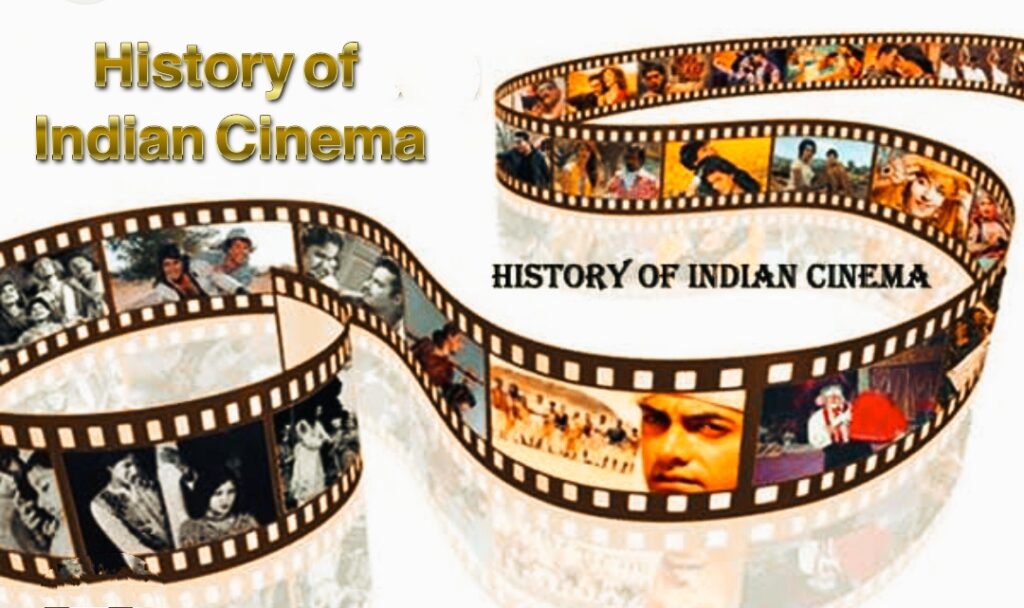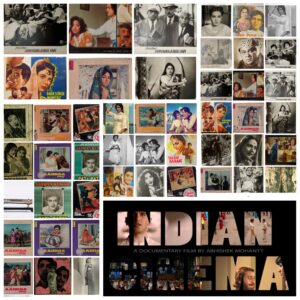Manashimaya

Indian cinema often hailed as Bollywood, has a vibrant history that spans over a century. From the silent era to the era of masala movies and beyond, it has evolved, transformed, and grown to become one of the most influential film industries in the world. Let’s embark on a journey through the fascinating history of Indian cinema.

Early Beginnings: Lumière Brothers and the Genesis of Indian Cinema
The journey of Indian cinema traces back to 1896 when the Lumière Brothers introduced their groundbreaking films to audiences in Mumbai, then known as Bombay. These pioneering screenings marked the inception of cinema in India, enchanting viewers with the mesmerizing allure of moving pictures. However, a significant milestone was achieved when Harishchandra Sakharam Bhatavdekar, fondly known as Save Dada, imported a camera from England. Save Dada’s inaugural film, ‘The Wrestlers,’ documented a straightforward wrestling bout at Mumbai’s Hanging Gardens in 1899. This groundbreaking film is widely recognized as the first-ever motion picture produced in the Indian film industry.
Bollywood: It’s birth, Dadasaheb Phalke and ’Raja Harishchandra’
The story of Indian cinema begins with Dadasaheb Phalke, often regarded as the ‘Father of Indian Cinema.’ In 1913, Phalke released his groundbreaking film, ‘Raja Harishchandra,’ marking the birth of Indian cinema. This silent film was a milestone, capturing the imagination of the masses and laying the foundation for the cinematic journey ahead.
Rise of New Film Houses in the 1920s
The 1920s witnessed the emergence of new production companies that further propelled the growth of Indian cinema. Films began to explore diverse themes,reflecting the socio-cultural milieu of the time. The industry saw experimentation and innovation, setting the stage for the golden era that was to come.
“Alam Ara: The Dawn of Talkies“
‘’Alam Ara,’’ India’s first sound film, was released in 1931, sparking another revolution in Indian movie history. Ardeshir Irani, the film’s director, successfully ushered in the era of “talkies” by enthralling viewers with its catchy soundtrack and compelling narrative. The introduction of sound changed the moviegoing experience by increasing accessibility and viewer engagement.
A New Dawn: Cinema’s Evolution Post-Independence
Post-independence, Indian cinema underwent a significant transformation, reflecting a newly independent nation’s aspirations, dreams, and challenges. Filmmakers began to address socio-political issues, portraying the realities of Indian society with depth and sensitivity. This period saw the rise of iconic filmmakers like Satyajit Ray, Ritwik Ghatak, and Guru Dutt, who introduced a new wave of cinema that was both artistic and thought-provoking.
The 1950s and 1960s were “The Golden Age”
Many people consider the 1950s and 1960s to be the height of Indian cinematic creativity. Legendary performers like Dilip Kumar, Raj Kapoor, and Dev Anand rose to fame during this time, captivating audiences with their charm and skill. Filmmakers such as Bimal Roy, Mehboob Khan, and V. Shantaram made masterpieces that are still praised today for their mastery of storytelling and inventive cinematography.
Music’s Integral Role in Indian Cinema
One cannot discuss the history of Indian cinema without acknowledging the integral role of music. Music has been a cornerstone of Indian cinema, enriching storytelling and connecting deeply with audiences across generations.
From the soulful melodies of classical music to the energetic rhythms of folk and contemporary tunes, Indian cinema’s musical landscape is as diverse as the country itself. Music directors like S.D. Burman, R.D. Burman, Laxmikant-Pyarelal, and A.R. Rahman have created iconic soundtracks that have become an indelible part of Indian culture.
Bollywood’s Golden Age: The Masala Movie Era
The 1970s and 1980s saw the rise of Bollywood, a term coined to describe the Hindi film industry based in Mumbai (formerly Bombay). This era was characterized by ‘masala movies’ – films that combined elements of action, drama, romance, and music to create blockbuster entertainers. Superstars like Amitabh Bachchan, Dharmendra, and Sridevi became household names, and their films resonated with audiences across the country and beyond.
Trailblazing Women in Indian Cinema
The late 20th century also saw the emergence of women directors who broke barriers and made their mark in Indian cinema. Filmmakers like Aparna Sen, Deepa Mehta, and Mira Nair brought unique perspectives and stories to the screen, challenging societal norms and inspiring a new generation of filmmakers.
New Horizons: Indian Cinema in the Modern Era
The 1990s marked a period of transition for Indian cinema, with filmmakers exploring new genres and narratives. The rise of independent cinema and the advent of multiplexes provided platforms for diverse voices and stories to be heard. Directors like Anurag Kashyap, Vishal Bhardwaj, and Zoya Akhtar pushed boundaries, creating films that were innovative, bold, and impactful.
To sum up, the chronicles of Indian film provide witness to its tenacity, inventiveness, and cultural importance. Indian cinema has come a long way from its silent film origins to becoming a global phenomenon that enthralls viewers everywhere. One thing is clear as we look to the future: audiences will continue to be inspired, entertained, and enthralled by Indian cinema for many years to come.
